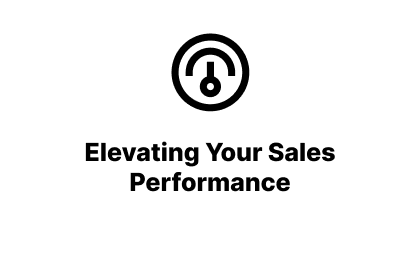Elevating Your Sales Performance: A Comprehensive Guide to Sales Enablement
Sales enablement is a vital strategy for businesses looking to maximize their sales team's performance and ensure overall business growth.
This strategy goes beyond training or software—it's about providing your sales team with the tools, resources, and knowledge they need to sell more effectively. This article will walk you through the concept of sales enablement, its importance, and how to implement it in your organization.
Understanding Sales Enablement
Sales enablement is a strategic approach that equips sales teams with the tools, content, and training they need to engage buyers effectively throughout the sales process. This includes a broad spectrum of resources, such as up-to-date product information, training programs, competitive intelligence, and technology solutions.
The main goal of sales enablement is to boost sales productivity and effectiveness, leading to increased revenue, shorter sales cycles, and higher deal sizes. It involves a continuous process of learning, practicing, and mastering sales skills and methodologies.
The Importance of Sales Enablement
In today's highly competitive market, it's not enough to have a great product or service. Your sales team needs to be equipped to handle increasingly complex sales processes, understand customer needs, and articulate your unique value proposition effectively. Here's why sales enablement is crucial:
1. Increased Sales Productivity
By providing sales reps with the right tools and resources, you can reduce the time they spend on non-selling tasks and enable them to focus on selling more efficiently and effectively.
2. Improved Sales Alignment
Sales enablement ensures that your sales team's activities are aligned with your business goals and strategies. This improves coordination between departments and leads to a more unified approach to reaching sales targets.
3. Enhanced Customer Relationships
When sales reps are well-equipped, they can better understand customer needs, tailor their sales approach accordingly, and build stronger, more profitable relationships.
Implementing a Sales Enablement Strategy
Here are some practical steps to effectively implement a sales enablement strategy in your organization:
1. Define Your Sales Enablement Goals
Your sales enablement strategy should align with your business's overall objectives. Identify what you want to achieve—whether it's increasing revenue, improving sales efficiency, or reducing sales cycle length.
2. Identify the Necessary Resources
Determine what tools, content, and training your sales reps need to reach these goals. This could range from CRM software to product datasheets, competitor analysis, and regular sales training programs.
3. Involve Multiple Departments
Sales enablement should not be a siloed effort. It requires collaboration between sales, marketing, product management, and other departments. Make sure there's a continuous flow of information and support between these teams.
4. Implement Sales Enablement Technology
Sales enablement platforms can help manage and distribute resources, deliver training, and track performance. Choose a platform that fits your needs and integrates well with your existing systems.
5. Measure and Refine
Monitor key metrics to assess the effectiveness of your sales enablement strategy. These could include sales cycle length, deal size, and sales rep productivity. Use these insights to refine your strategy and make continuous improvements.
To summarize
Sales enablement is a critical component of a successful sales strategy. By equipping your sales team with the right tools, training, and resources, you empower them to sell more efficiently and effectively. Implementing a sales enablement strategy requires clear goal setting, cross-departmental collaboration, and regular monitoring and refinement. But with these steps, you'll be well on your way to boosting your sales performance and driving business growth.



